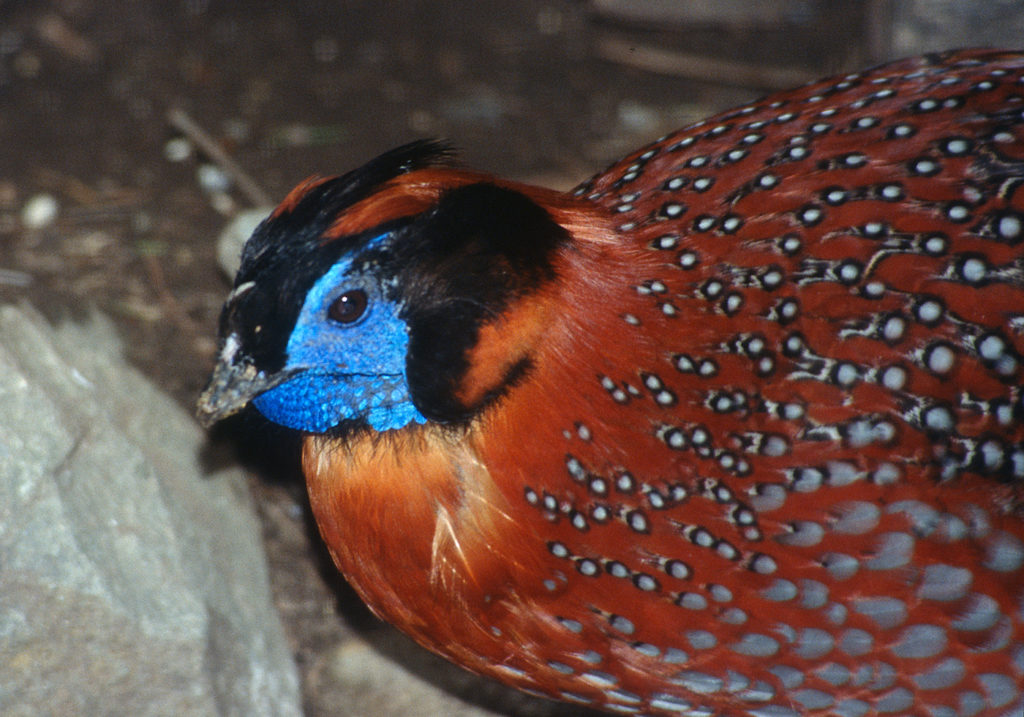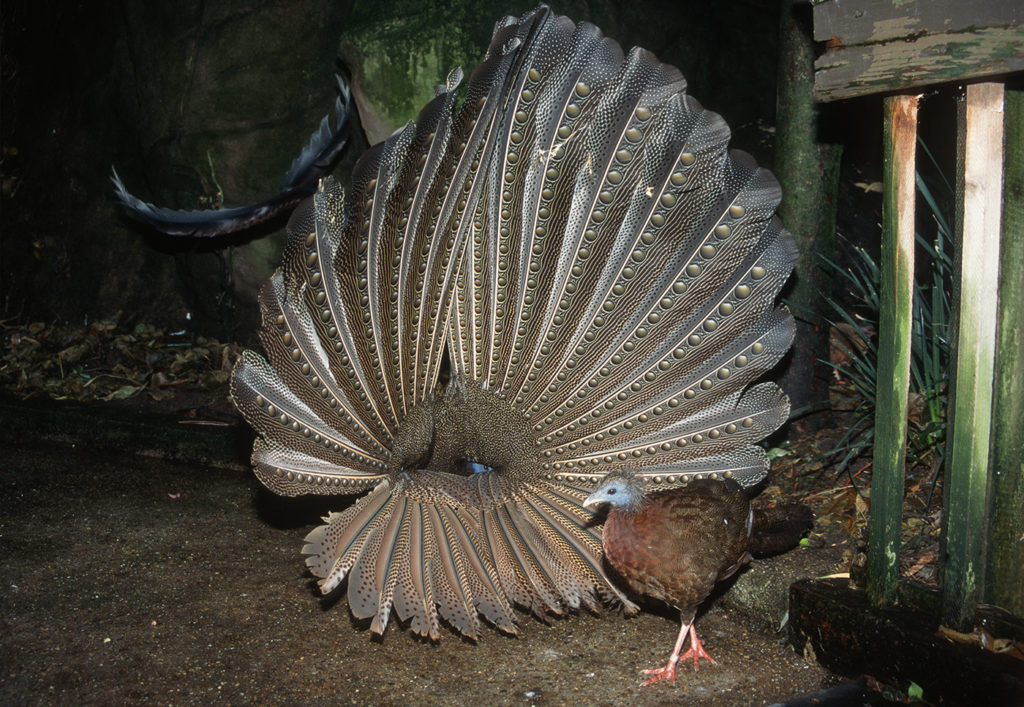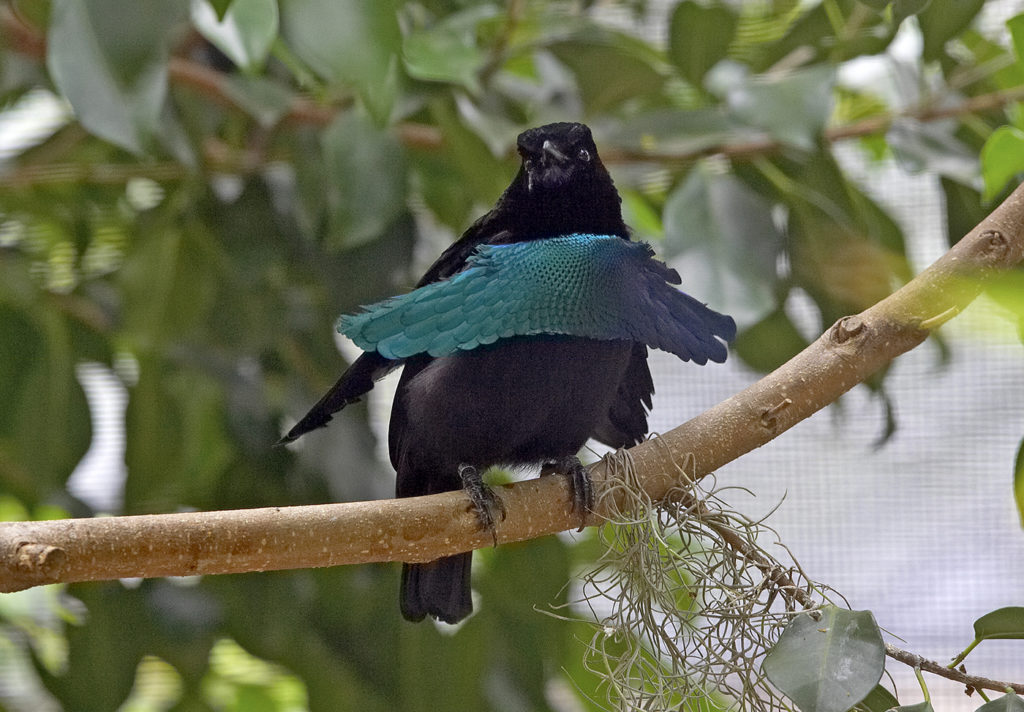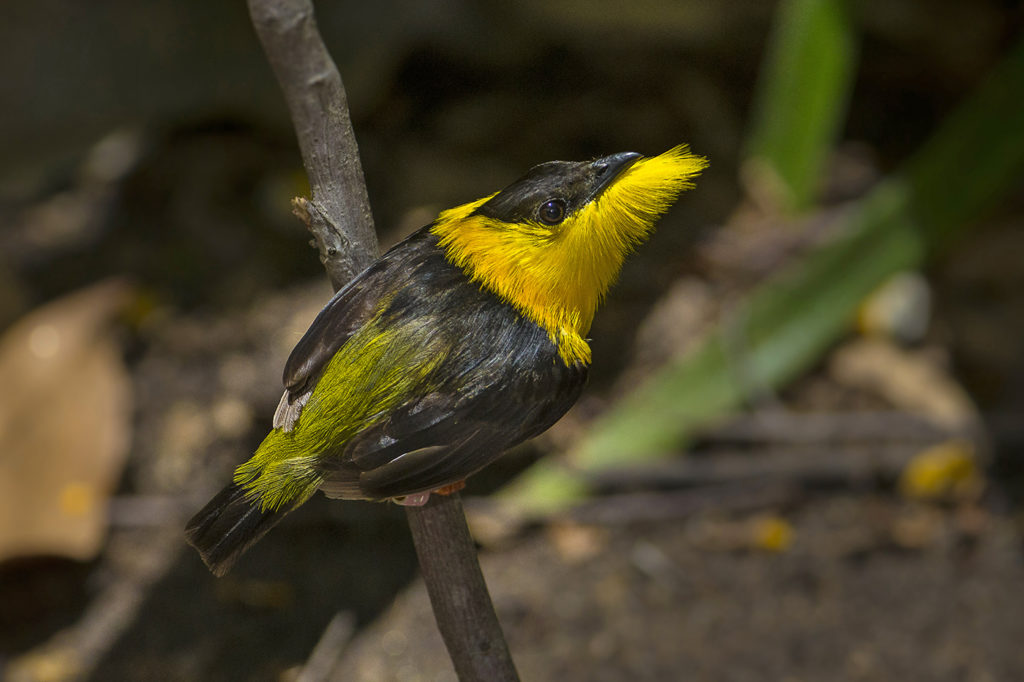It’s one thing to put your best foot forward when it comes to attracting a mate, but in the bird world, many males make the most of everything they’ve got—from feathers to feet. While some can turn a girl’s head with colorful plumage (we’re looking at you, Mr. Peacock), others use often-intricate dances and fancy wing work to land a date. In other words, avian courtship can require doing a little hokey pokey if you want any hanky panky. Here are a few of the lesser-known winged wonders that are willing to shake whatever it takes to impress the ladies.

This male Temminck’s tragopan’s lappet is contracted—it’s that fleshy bit below his beak. When the time is right and he has a female’s attention, he’ll let it extend in all its glory.
Considered by many to be the most beautiful pheasant in the world, the Temminck’s tragopan, native to northern India, Vietnam, Myanmar, and southern China; certainly shows his true colors in the name of love. Hoping to entice the female, this orange-and crimson-bodied bird inflates his lappet (or bib). The lappet is marked with bright blue, crimson, and white, and is so large it hides the rest of the bird’s body behind it. Like all male tragopans, male Temminck’s have fleshy horns that are usually hidden beneath the feathers of his head. During a frontal courtship display, those horns stand tall, and the bird fans his tail and performs an impressive dance. How could a girl resist moves—or a lappet—like that?

Can you see the male great argus pheasant peeking through to see how the female is responding?
In forested areas of Borneo, Sumatra, and the Malay peninsula, the great argus pheasant lets the ladies know ahead of time that they’re in for a spectacular show. He calls out to the females, and fastidiously cleans his dancing site, then attempts to impress the object of his affection with a foot-stomping dance. His big finish is an impressive display in which he creates a fan of feathers with his wings. He peeks through his feathers to see if the female is feeling his groove.

A superb bird of paradise displaying for a potential mate—definitely an eye-catcher.
A series of screeching “schee” notes lets the female superb bird-of-paradise know that a male is close, single, and ready to mingle. The display begins with the male in a slightly crouched position, before alternately flashing his iridescent breast shield or flicking up the black cape feathers, while watching the female and gauging her response. Then the male goes all in, fully expanding the spectacular breast shield and flicking the cape feathers forward, over, and around the sides of the head (think of a toreador with a cape). The result is a complete circle of black, broken only by the iridescent breast shield feathers and eye spots. With the feathers in this position, the male then busts out his best dance moves, while also producing a series of clicking noises created by sudden movement of the wings. Production value alone would win this New Guinea native a “superb” designation.

A male golden-collared manakin would do great in a beard championship. When they’re not displaying, those “beard” feathers lay against the bird’s throat.
In Panama and western Colombia, male golden-collared manakins rely on their wingmen to help attract a mate—and their fancy footwork doesn’t hurt, either. Making sure to show off their bright-yellow throat and beard to attract the attention of females, males strut and pose in groups called leks in a defined display area on the forest floor. Wanting to make sure the females get the whole picture, the males carefully clean their “stage” beforehand by removing dead leaves and foliage that might obstruct the female’s view. During the courtship display, males perform complex acrobatic moves, leaping from one sapling to another, while making attention-grabbing “snapping” sounds by forcefully beating their wings together above their heads. They get the girl with a little help from their friends!
Peggy Scott is an associate editor for San Diego Zoo Global. Read her previous blog, A Starling is Born (or Hatched).





